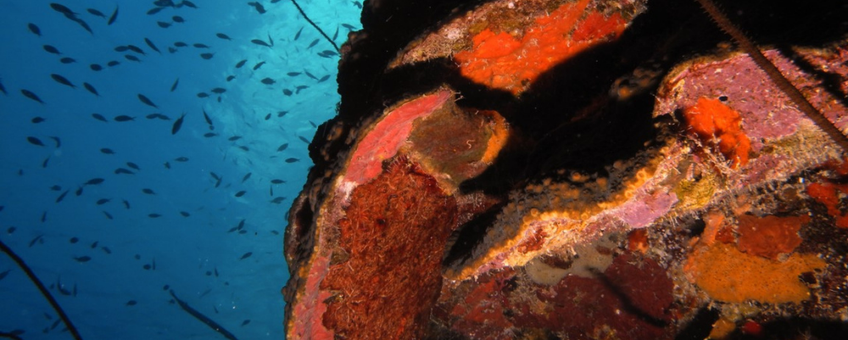
New research improves traditional reef survey techniques
Carmabi, Dutch Caribbean Nature Alliance (DCNA), University of Amsterdam Coral reefs are one of the most diverse ecosystems on the planet. Coral’s beautiful skeletal structure plays an important role in providing reef habitat, nursery and hunting ground, while also protecting coastal zones. Climate change continues to be a significant threat to these areas. That makes the need for accurate mapping and surveying techniques vital to researchers’ abilities to detect change. Traditional mapping techniques use a 2D approach to project surface cover estimates throughout a 3D structure. Unfortunately, this technique misses hidden habitats, such as overhangs and cavities. This can result in an underrepresentation of biomass estimates.
Coral reefs are one of the most diverse ecosystems on the planet. Coral’s beautiful skeletal structure plays an important role in providing reef habitat, nursery and hunting ground, while also protecting coastal zones. Climate change continues to be a significant threat to these areas. That makes the need for accurate mapping and surveying techniques vital to researchers’ abilities to detect change. Traditional mapping techniques use a 2D approach to project surface cover estimates throughout a 3D structure. Unfortunately, this technique misses hidden habitats, such as overhangs and cavities. This can result in an underrepresentation of biomass estimates.
2D versus 3D
New research from the University of Amsterdam and CARMABI Foundation compared 2D versus 3D survey techniques. Traditionally, organism abundance was calculated as the percentage of projected reef cover. Previously, this was done by 2D surveys. However, a new strategy hopes to improve on this technique by using the combination of photograph analysis, diving surveys and computer modeling. Researchers surveyed twelve coral areas on the island of Curacao, then compared 3D benthic community estimates against traditional 2D projected surface cover analysis.
The results

During this research, scientists found that while using 2D techniques, the relative contribution of organisms that grow vertically (gorgonians and massive sponges) was up to two and eleven times lower, respectively, than their contribution to reef biomass. In addition, hidden areas represented nearly half of all total reef substrate. This means that two thirds of all coralline algae and almost all encrusting sponges are not included within traditional surveying techniques.
Using a variety of different metrics, this research presents adjustments to current monitoring techniques, highlighting the importance of evaluating the ecological contributions of previously disregarded or underrepresented species. These metric conversions can be used to complement traditional survey techniques to provide improved estimates for biovolume, biomass and element composition (stocks of organic carbon and nitrogen) within coral reef communities.
Implications

Understanding the true composition of coral reefs is vital for designing and implementing effective conservation strategies. Coral’s unique ability to create complex habitats is vital to maintaining high community diversity and abundance in shallow water environments. It is estimated that nearly 75 to 90 percent of coral reef ecosystems are hidden under the surface skeleton. This means that for every square meter that can be seen, there is up to eight square meter of additional habitat underneath. This study suggests that 2D approaches may be useful to produce relatively fast estimates of reef ‘health’, but a 3D approach is needed to understand coral reef’s true composition.
More information
- To read more, find the full study on the Dutch Caribbean Biodiversity Database.
Text: Dutch Caribbean Nature Alliance
Photos: Niklas Kornder; Eric Mijts; Francesco Ungar
